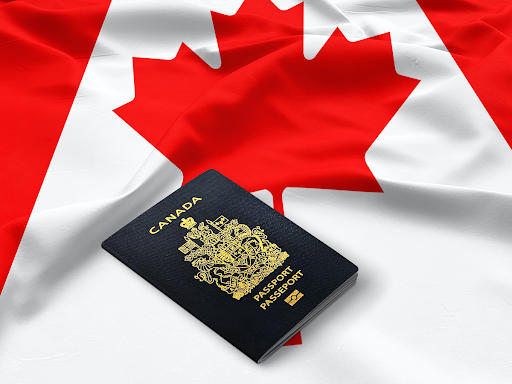Canadian Flag and Passport (Immigration.ca)
By: Simoni Parikh
The immigrants that travel from places all across the world to Canada, usually have a very specific reason for a life-altering move. Moving to North America where the winters are cold, and the summers are hot, Canada has a lot to offer to a family-oriented individual or big families in general.
The location that an immigrant chooses greatly influences many long-term factors. Immigrants always come with the motion that unless they work hard, they will remain in the same class they were in. The location is vital to determine the competition around the area, and in finding your place on the socioeconomic ladder. Competition has increased over the years and it has only made people’s journey harder.
British Columbia and Ontario are the fastest-growing provinces in Canada. Their population has increased extensively which is why the government is hoping for immigrants to choose wisely and immigrate to provinces like Manitoba, Saskatchewan, Quebec, etc. Although their population is above one million, it is not enough to have a country’s population thrive on their own.

“A rally against racism and in support of migrant workers' rights in Toronto, Ontario,
on 16 June 2019 | Creative Touch Imaging Ltd/NurPhoto/PA Images”
"Forming part of the second-largest country in the world, Canada’s provinces cover a vast range of territory and understandably have different resource endowments, employment prospects, and demographics. Understand which province will better suit your Canadian immigration settlement needs by reading about each of their different industries, cities, and characteristics.” (Dalgleish, 2021)
“The proportion of the foreign-born in Canada was exceeded by the foreign-born population in Australia (22.2 percent) but was higher than in the United States (12.5 percent in 2006 and 12.9 percent in 2010). About one in every 11 immigrants in Canada was from the United Kingdom. Immigrants from the top five countries of origin - the United Kingdom, China (excluding Hong Kong and Taiwan), India, Philippines, and Italy - accounted for 33.8 percent of all the foreign-born in Canada. While immigrants from the United Kingdom represented the largest foreign-born group in Canada, the immigrant population of Canada was not dominated by a single group, unlike in Australia and the United States.” (Migration Policy, 2018)
Since there are a great number of international people coming to Canada, it is important to note that not all of them know English or French. Due to this very reason, it would make it increasingly difficult to fit in and work in a place like Canada where these two languages are spoken fluently.
Having an education in the 21st century is not a privilege but a right and with the second generation having the education and qualifications to “be the best candidate” for their future makes a significant difference. The ability to speak the same language as the people around them, having an increased amount of knowledge on the world and life around them makes a great difference.
Speaking about the second generation and their privileges are necessary, but it is also important to let those individuals recognize where they stand as well. The second generation will always have it easier than the first and the third generation will have an even better chance of succeeding in any country, let alone Canada.
In conclusion, it is essential to understand the effects that immigration to one country from another may have on an individual. Considering all underlying factors and taking into account that there is a possibility that you may not succeed is something one must consider when making this life-changing decision.

Poster based on the drive of the upcoming first and second generations. (Catholic News Services)
Speaking about the second generation and their privileges are necessary, but it is also important to let those individuals recognize where they stand as well. The second generation will always have it easier than the first and the third generation will have an even better chance of succeeding in any country, let alone Canada.
In conclusion, it is essential to understand the effects that immigration to one country from another may have on an individual. Considering all underlying factors and taking into account that there is a possibility that you may not succeed is something one must consider when making this life-changing decision.
Works Cited
Griffith, Andrew. “Why the Canadian Government Must Review Its Immigration Policy.” OpenDemocracy, 23 Feb. 2021, https://www.opendemocracy.net/en/pandemic-border/why-canadian-government-must-review-its-immigration-policy/.
Dalgleish, Sarah Mae. “Choose Wisely: Immigration to Canada's Provinces and Their Main Industries.” FWCanada, 30 July 2013, https://www.canadianimmigration.net/blog/choose-wisely-immigration-to-canadas-provinces-and-their-main-industries/.
“The Top Sending Countries of Immigrants in Australia, Canada, and the United States.” Migrationpolicy.org, 22 Mar. 2018, https://www.migrationpolicy.org/programs/data-hub/top-sending-countries-immigrants-australia-canada-and-united-states.
Scott, Kate. “Immigrant Youth Express Fears, Determination through Self-Portraits.” Catholic News Service, 28 Feb. 2018, https://www.catholicnews.com/immigrant-youth-express-fears-determination-through-self-portraits/.

